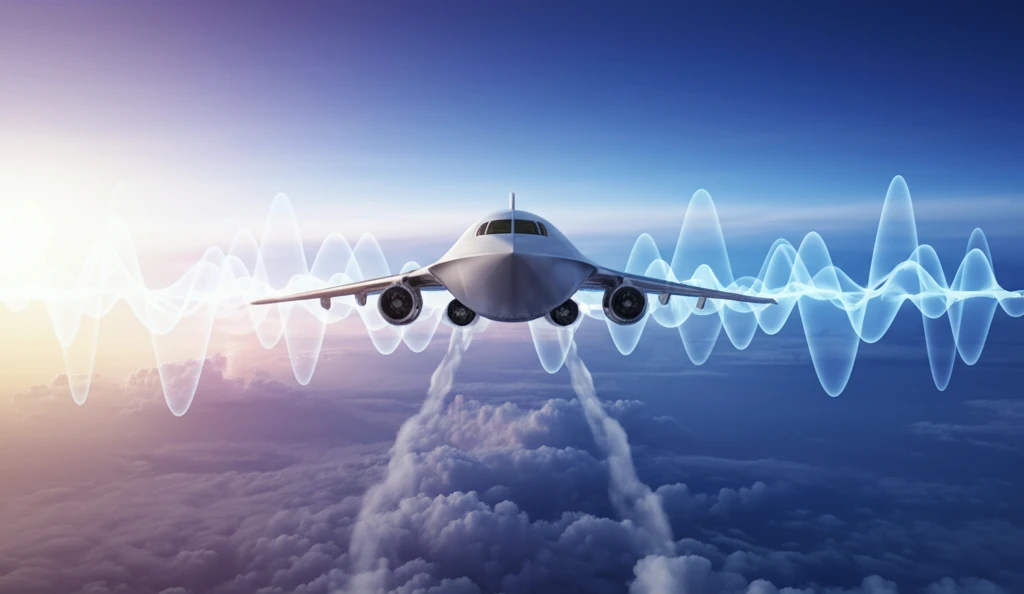
Silence the Noise: How Hybrid Dissipation Schemes are Revolutionizing Aeroacoustics
"Could a blend of old and new computational techniques hold the key to quieter, more efficient aircraft design?"
Imagine a world where air travel is significantly quieter, where the roar of jet engines is reduced to a mere whisper. This isn't just a dream; it's a tangible goal that researchers are actively pursuing through advancements in aeroacoustics. At the heart of this pursuit lies the challenge of accurately simulating and mitigating the noise generated by aircraft. Traditional methods often fall short, struggling to capture the complexities of turbulent airflow and acoustic wave propagation. But a new approach is emerging: hybrid dissipation schemes.
Aeroacoustics, the study of noise generated by airflow around objects, is critical in numerous engineering applications. This field is especially important in aerospace. Engineers and researchers are constantly seeking methods to reduce aircraft noise pollution to enhance passenger comfort and meet stringent environmental regulations. Simulating these complex acoustic environments requires computational techniques that are both highly accurate and efficient. Hybrid dissipation schemes represent a significant step forward in achieving these goals.
This article explores how these schemes work and why they represent a significant advancement in computational aeroacoustics. We'll dive into the core concepts, break down the technical jargon, and illustrate the real-world implications of this technology. Whether you're an aviation enthusiast, a student in engineering, or simply curious about the future of flight, understanding hybrid dissipation schemes will offer valuable insights into the innovative approaches shaping the next generation of aircraft design.
What Are Hybrid Dissipation Schemes and Why Do They Matter?

Hybrid dissipation schemes are numerical techniques used in computational fluid dynamics (CFD) to simulate fluid flows and acoustic phenomena. These schemes combine the strengths of different numerical methods, typically blending high-resolution, low-dissipation schemes with more robust, upwind schemes. The goal is to achieve accurate simulations while maintaining stability, especially in complex flow conditions.
- Improved Accuracy: By combining low-dissipation methods, hybrid schemes capture the subtle details of acoustic wave propagation and turbulent flow, leading to more realistic simulations.
- Enhanced Stability: The integration of upwind schemes ensures that the simulations remain stable, even in the presence of complex flow features like shock waves and turbulence.
- Versatility: Hybrid schemes can be adapted to various flow regimes, making them suitable for a wide range of aeroacoustic applications, from subsonic to supersonic flows.
- Efficiency: By dynamically adjusting the blending of different schemes based on the local flow conditions, hybrid schemes can optimize computational efficiency.
The Future of Quiet Flight: Hybrid Schemes Lead the Way
Hybrid dissipation schemes represent a crucial step forward in the quest for quieter, more efficient aircraft. By combining the strengths of different numerical methods, these schemes offer a powerful tool for simulating complex aeroacoustic phenomena. As computational power continues to increase and these techniques become more refined, we can expect even greater advancements in aircraft design, leading to a future where air travel is not only faster and more convenient but also significantly quieter for both passengers and communities near airports.
